
When I get old, I will play the piano for my mules; they will listen to my old Western tunes, then I will release them to romp in the pasture. ![]()
![]()
Mules, Mule Talk the podcast, mule training books by Cindy K Roberts

When I get old, I will play the piano for my mules; they will listen to my old Western tunes, then I will release them to romp in the pasture. ![]()
![]()
You Don’t Start At The Top
It’s proven, mules mature physically and mentally at a slower pace than horses do. However, being hybrids, it is also proven they are smarter than both their parents. Yes, that means they are smarter than the horse (a given, because horses can be forced or bossed around into doing a task) and they are smarter than the donkey, who is a thinking machine in their own species.
So, while some mule owners get impatient about the training process, that is when the roadblocks start showing up in their schooling efforts.
Everyone wants to be at the top. The time and effort put into the equation may cause some people to give up. Because with time and effort, you will make mistakes. You have to make mistakes, in order to learn. You might make a career change and try something new, or you may become hard on yourself for not making accomplishments at the pace you so desire.
And, slamming someone for their own mistakes is not a part of the working solution. This is so unsettling to me, because as humans, we tend to resort to using cheap tactics by becoming “Keyboard Karens.” I don’t dare let my mules have access to the computer, because they do know so much! Being assertive is one thing, but becoming a Keyboard Karen is not cool at all.
With all kidding aside, as humans, we can get better at our work…provided we learn from our mistakes. Quite simply, if we don’t learn from our errors, lessons are repeated until they are learned! That’s the Karma wrapped up in the Universe. It’s a big world out there and the Universe is endless.
As trainers or instructors in the mule industry, we don’t start at the top. At times, we will fail. We desire to show our best videos and photos that make us look like mule superstars, never do we show our bloopers. Dang! That opens the gate for “Keyboard Karens” to cut us down! Which brings to my mind the real fascinating stuff to this article.
Mules don’t take to internet bullying tactics. They have no interest in “Keyboard Karens” and they don’t show off muscle or “strength” to impress themselves or in an attempt to get outside approval. Mules comply to their barnyard rules of conduct, known as the pecking order. In this scenario, size doesn’t matter. The 2,500 pound draft mule is generally easy-going and follows through with the herd boss. What matters is the herd will stick together; this makes the herd structure stronger and well protected from predators. Stick with me, there’s a lesson here: mule trainers, instructors, and riders with integrity, show respect for other trainers/riders and offer assistance where needed. They won’t slam others and they show a high regard for others wherever their journey takes them.
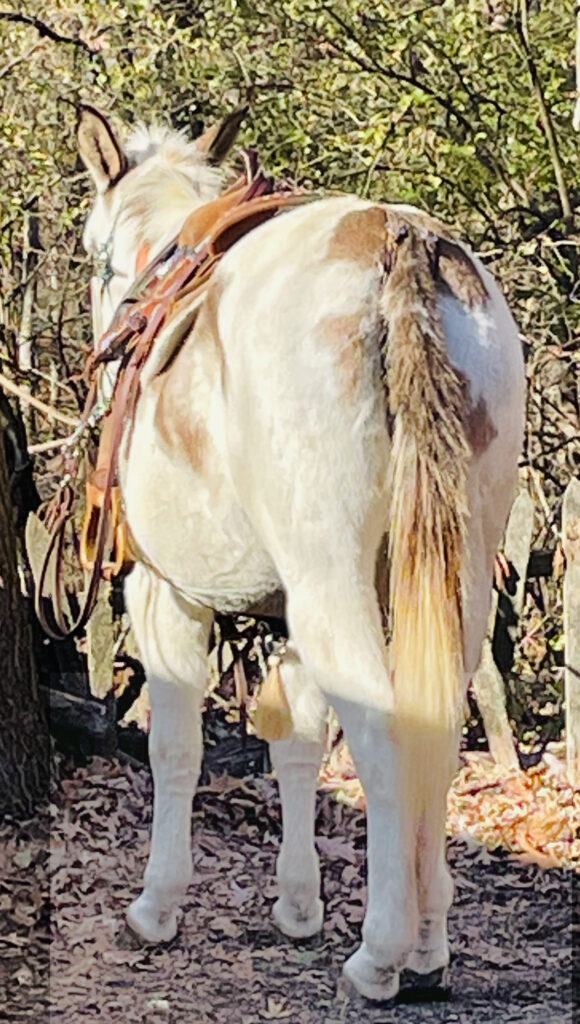
As a side note: you can talk bad or take a slam at them from your keyboard as often or long as you want on social media. You know what? You just made an ass of yourself. And yes, the pun is intended. (wink.)
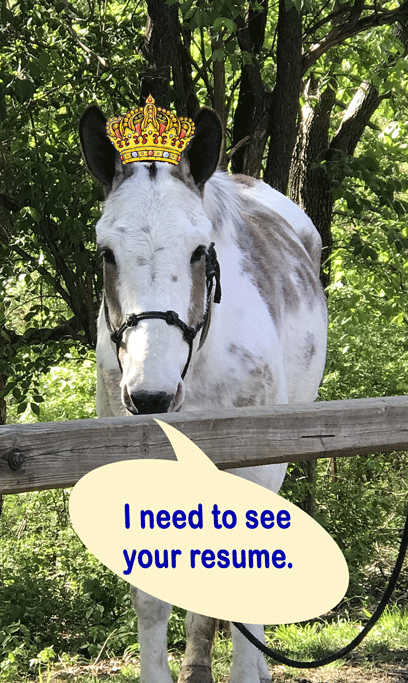
Greatness: The quality of being great, distinguished, or eminent. Dang! Double Dang! I had to leave the mule corral on this one, Do you realize if mules focused on developing greatness, they would be unstoppable? That would keep me in the bleachers for a long, long while. This is what I found in how we, as humans, measure greatness. And interestingly, I also found some of the same qualities in mules:
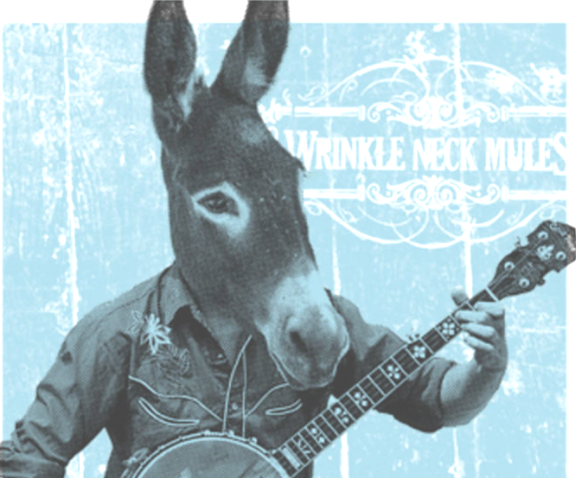
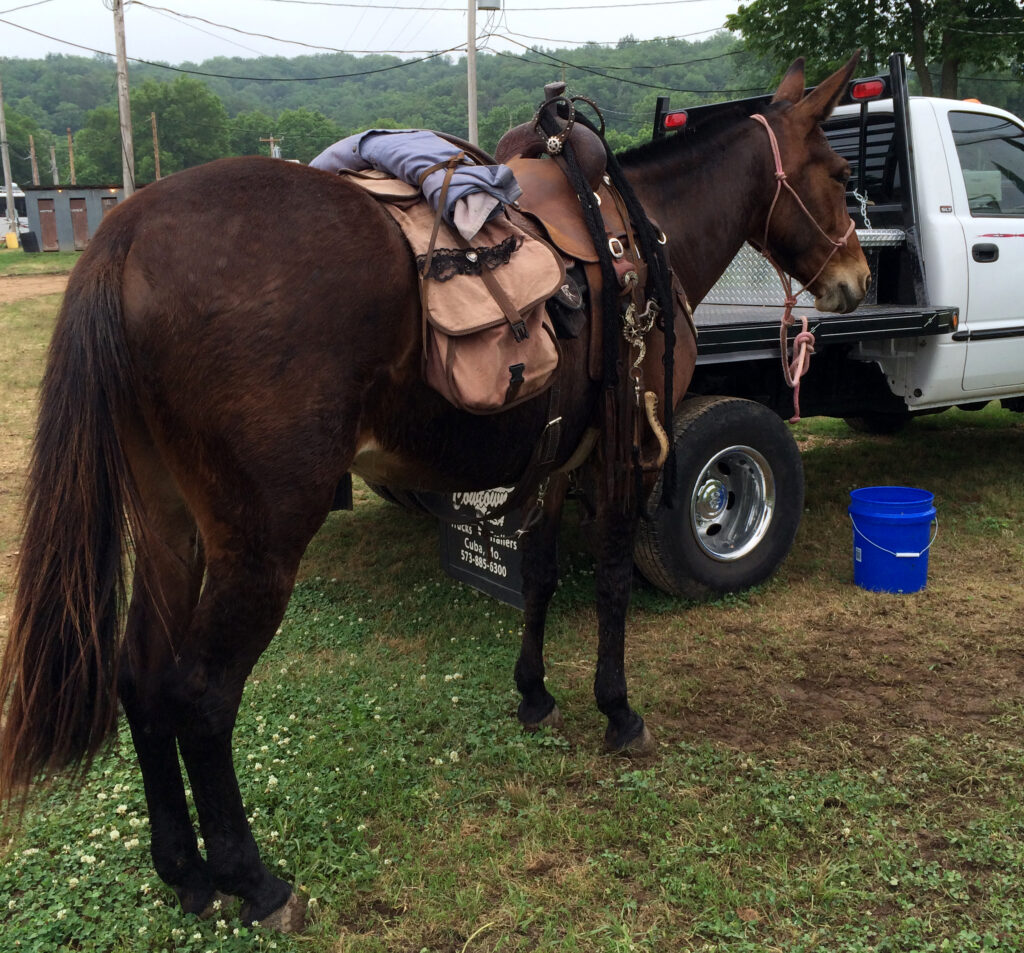

Mules and horses are good at this. They know how to get around the hay pile, they know who they can nudge over and who they can boss around. It’s called herd dynamics.

The water trough is another example of defining herd dynamics. There may be an informal line at the water trough, but everyone knows their place. If a horse or mule steps up before his “turn” then ears quickly lay back, and the structure of the pecking order is then reenforced. What pecking order you say? The basic pattern of social organization within a flock of poultry in which each bird pecks another lower in the scale without fear of retaliation and submits to pecking by one of higher rank. That pecking order!

Broadly speaking, a dominance hierarchy in a group of social animals…that pecking order!
Several years ago, an informal race was set up near the levy along the Missouri River between Cowboy the paint horse, and Rawhide the bay mule. They were both competitive by nature and they were fun to ride. The topic of who is faster, the horse or the mule came up and to settle the argument, the race was scheduled on one, early Summer’s evening.
There were horse riders watching on the sidelines along with the crowd of flies and mosquitoes. Everyone was ready…the race started off with a bang! Myself, riding Cowboy down the main stretch, and Bronco Laura on Rawhide the fearless bay mule, are galloping full speed ahead all the way down the throughway. We are moving fast down the entire track! At the straightaway, I

am leaning forward, giving a pep talk into Cowboy the paint horse’s ear to win this thing! Bronco kept the course on Rawhide the bay mule, by yelling and screaming at the top of her lungs, and slapping leather! Cheers and hollering took over the entire valley!
We were neck in neck when all of a sudden, Rawhide took an abrupt rubberneck


move to initiate a Sally-Stink-Eye stare tactic! You know the Sally Stink-Eye Stare Tactic, where the opponent sizes you up in a micro-second. Where you feel in an instant, it’s curtains for you! That Sally-Stink-Eye Stare tactic!
That was the moment that Cowboy the paint horse became fearful of the competition all because Rawhide the mule, eye-balled him all the way down the track! Rawhide the mule won the race by two lengths easy! Another historical moment recorded in the Devil’s Island Boarding Barn Hall of Fame!

There will be a time in your life, for you to compete at what is important to you. Whether it is a job position or being first to the counter at a K-Mart Blue-Light special.
Losing to the competition can be emotional, however, you need to focus on:

Cowboy the paint horse took the loss pretty hard, so I started one-on-one sessions with him on building his self-esteem. He got rewarded
for the slightest try on his part on whatever I asked of him. And it wasn’t long after that, Cowboy bounced back and became very full of himself. And that’s how you take it on the chin. OK, you got this!
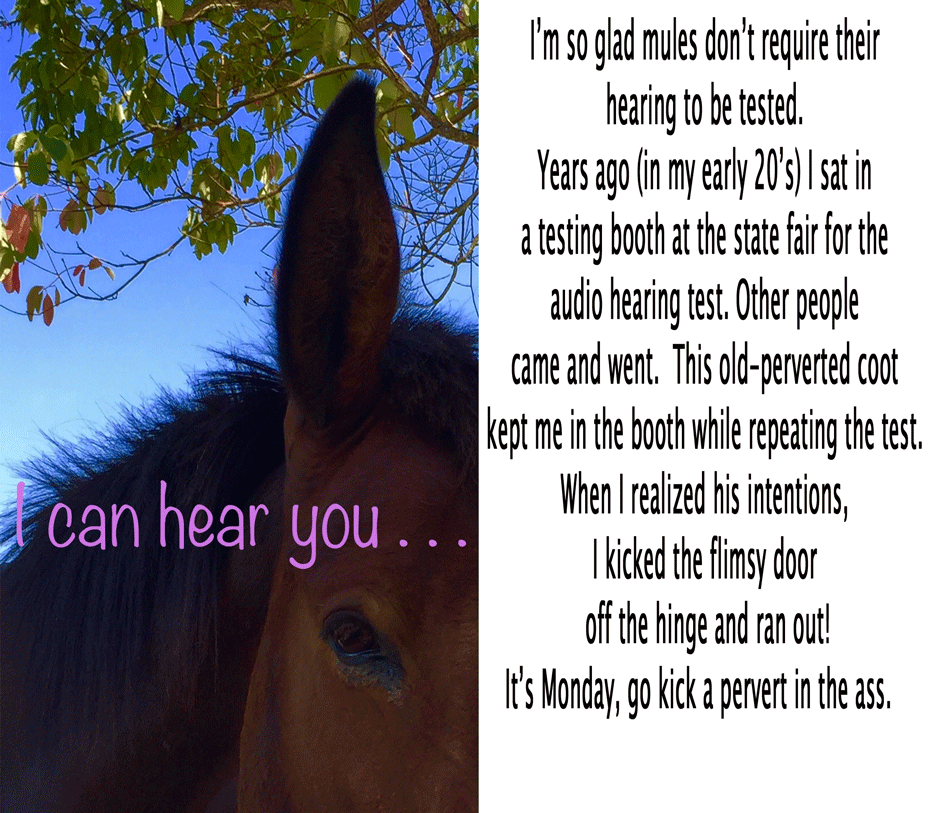
By Cindy K Roberts
In the rodeo world, an established point system that scores a rider’s performance is used. For example, a judge awards points primarily for spurring action in bareback and saddle bronc riding. The rider loses points if his toes are not turned out with his spurs in contact with the horse; if spurring is not continuous throughout the ride; and if he is not balanced and in control. Points are gained or lost according to the rider’s rhythm and timing with the horse’s bucking. Now, in bull riding, points are scored by the rider maintaining body control and position regardless of what the bull is doing. Spurring is not required in bull riding, but definitely adds points to the score. When it comes to scoring the stock, high kicking action with hind legs fully extended makes for a better score. This all adds up to a better show and yes rodeo is a sport, it takes balls and one must be an athlete.
Interestingly, 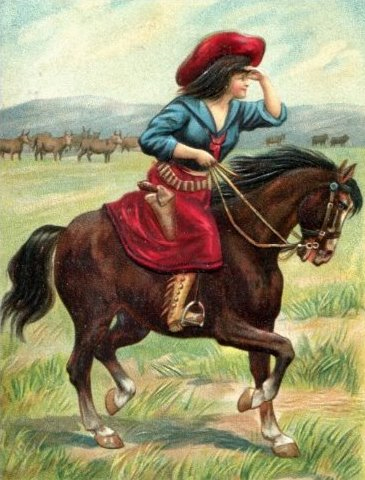 the established point system in the cowgirl world is similar. Points are gathered from the first pony ride to the very last barn dance, these special moments build up the very ego of a special woman who is connected with her horse or mule. The greater the experience the higher the points and the more accomplished the rider feels. Unforeseen events or screw-ups work against the point system and are hard on the ego. Screw-ups such as getting dumped; you could get dumped by your horse or you could very well get dumped by your boyfriend; we know that neither is good…very stressful to the cowgirl’s ego. Pride is weighed in heavily on this point system; a gal has bragging rights on the very event that is recorded as an accomplishment or milestone in her Western world. Life is competitive around the barn and ranches; scoring high is essential.
the established point system in the cowgirl world is similar. Points are gathered from the first pony ride to the very last barn dance, these special moments build up the very ego of a special woman who is connected with her horse or mule. The greater the experience the higher the points and the more accomplished the rider feels. Unforeseen events or screw-ups work against the point system and are hard on the ego. Screw-ups such as getting dumped; you could get dumped by your horse or you could very well get dumped by your boyfriend; we know that neither is good…very stressful to the cowgirl’s ego. Pride is weighed in heavily on this point system; a gal has bragging rights on the very event that is recorded as an accomplishment or milestone in her Western world. Life is competitive around the barn and ranches; scoring high is essential.
An example of how the cowgirl goes about collecting her points: to score points one must be subjected to a series of events that involves moving hay, catching loose stock, training mules and horses, fixing fences, gatherin’ strays, and doctoring livestock. . . just to name a few. Of course, while performing these necessary barn or ranch assignments the cowgirl will be subjected to a certain amount of sweat, pain, blisters, possible burns, bruises, swelling, sprains, fractures, breaks, tears, and at times . . . blood. As one may have guessed, blood will help you score higher as well as the sprains, fractures, and breaks; throwing a mule into this mix is clearly a bonus. Being subjected to mud puddles or taking in some dust rates lower on the score sheet. Cleaning tack as necessary as it is, also rates lower on the score sheet as well along with feeding the barn cats.
It seems that the more mileage one can get out of telling a story regarding one’s own scrape with nature or their last heroic triumph in breaking their last mule, adds a little spark to the tale itself. Including heightened details in your discussion on concussions, memory loss, and staggering to find your way back after being thrown on the trail is what sets fire to the cowgirl’s soul. You see, there’s something about a war story, in this case, a cowgirl’s adventure tale, that brings a flame to the listener’s ear. The more drama ensued in the story, the higher points were earned. No one wants to hear a lame story on how the cat food was bought on sale for the barn cats, pouring the remainder in airtight containers and taking inventory of the felines lined up for dinner. Shoveling manure is not rated high for storytelling either. Even though shoveling manure is necessary, it is listed in the average B rating in the points category, simply because it does not require a higher skill set to do the task. But . . . to hear the story on how mule cowgirl, Prairie Rose got caught up in the high and mighty Missouri River from her mule slipping into the treacherous waters with sinking sludge underneath him, she clinging to the saddle horn, then to ride out the muddy rapids to the other side; that true tale itself will take one’s breath away! Yes, that is one worth talking about! You can easily imagine the snakes and snapping turtles lurking through the waters, not to mention the turkey vultures hovering above!
The time you rode the northern slope one sunny February afternoon, your mule slipped on a patch of frozen ground; all of a sudden, went down, crashed on his side, pinned your leg to the ground, then ended up with a sprained ankle. Crawling on hands and knees to find a strong limb to support you, this all adds special effects to the story. Never mind that your mule stood there at the bottom of the hill waiting for your return, licking and chewing the whole time. You are going for the round of bonus points. This is your opportunity to add the part, you called your mule that promptly walked up and waited patiently as you struggled to get back on. The bigger the injury, the more sloped over in the saddle one should be when returning to camp or the barn. All these treacherous details are not spared in a good cowgirl adventure story. By the way, this is important stuff here: everyone leaves out the part about tetanus shots, antibiotics and ointment. There’s something about tetanus shots, ointment, and gauze bandaging that doesn’t really appeal to the readers or listeners of a cowgirl up story; if you want to remain popular, you just don’t mention it.
Getting lost on the trail is not considered a heroic experience for earning points, because you are supposed to have enough sense not to get lost in the first place. However, if one had to use a knife or pistol in order to survive while trying to find their way, then that places the event into a whole new category. Anytime you add bears, struggling with a big cat or your mule was standing guard for coyotes, the points are higher and that is something worth writing home about.
The everyday actual tasks that rank high on the cowgirl Richter scale: roping wild mini-donks to corral them for the farrier visit, herding up young mules for their vaccinations, sorting mules for the pack string and moving cows to the other pasture; these are factual accounts of a cowgirl’s day that is worth some salt in talking about. Giving yourself stitches, cauterizing a wound, or drinking out of a hoof print certainly ranks high up there for gaining cowgirl points and will entertain your listeners for a long while.
There are special and cherished moments that will never be forgotten; giving birth has a special meaning and raising children is recognized as all-time extra points to be given to the living cowgirl. Helping to deliver a newborn foal into the world, bottle feeding an orphan calf, doctoring a sick horse . . . these challenges cowgirls embrace in their own lives. Cowgirls take responsibility for their everyday chores at home and work; they take pride in their work and they wear it well. They live, eat, drink, and sleep the cowgirl lifestyle. They contribute to everyone around them, they share and help others. They breathe in the cowgirl essence into their very soul. Live life well and score high amigos.
~Cindy K. Roberts